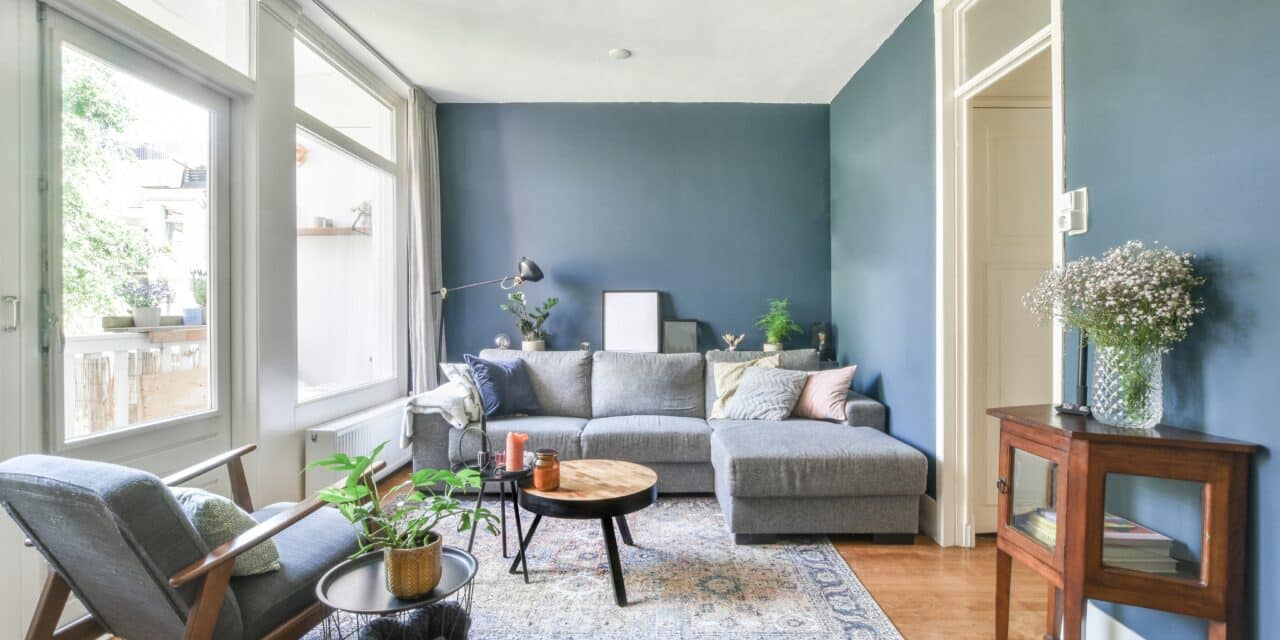Your living room is the heart of your home — it’s where guests gather, families relax, and design choices really show. Getting the paint right means balancing style, durability, and mood.
We’ve compiled a complete Q&A guide that answers every question you might have about choosing, prepping, and painting your living room for an elegant finish that lasts.
🏠 Paint Basics for Living Rooms
Q: What type of paint is best for a living room?
Choose a water-based interior wall paint (acrylic/latex) in a durable, washable finish. Living rooms see a mix of activity and aesthetics, so you want something that looks elegant but can be cleaned when needed.
Q: What sheen works best?
-
Eggshell: the most popular — soft, velvety, hides flaws, wipeable.
-
Satin: slightly shinier, more durable, great for high-traffic households.
-
Flat/Matte: elegant but harder to clean — best only for formal living rooms with little daily use.
Q: Do I need zero-VOC paint for a living room?
It’s a good idea. VOCs off-gas over time, affecting indoor air quality. Modern zero-VOC or low-odor paints look great and are healthier for everyday spaces.
Q: What brands make good living room paints?
Sherwin-Williams Cashmere (smooth application), Benjamin Moore Regal Select, Behr Premium Plus Ultra, and Clare Paint (designer-curated, VOC-free) are all strong options.
🖼️ Sheens & Finishes
Q: Which finish looks most elegant?
Eggshell is the standard choice for elegance — soft, low-sheen, and hides wall imperfections. For a more formal look, some designers use matte.
Q: Should trim be painted the same finish as walls?
No. Trim looks best in a higher sheen (usually semi-gloss) to create subtle contrast and durability.
Q: What about accent walls?
Accent walls can use the same finish (eggshell) or a slightly different sheen for contrast. Avoid high gloss unless you want a bold, modern look.
Q: Is washable paint necessary in a living room?
Yes — even in a formal space, fingerprints, dust, and scuffs are common. Choose a line with washable formulas to extend repaint cycles.
🎨 Color & Design Choices
Q: What are the best living room paint colors?
It depends on the mood you want:
-
Light neutrals (warm grays, beiges, creams): timeless, make rooms feel bigger.
-
Cool tones (blues, sage greens): calming and elegant.
-
Bold accents (navy, charcoal, deep green): dramatic, especially paired with white trim.
Q: Should living room paint be lighter or darker than adjoining rooms?
Often lighter colors keep flow between spaces. Darker colors can define the living room as a cozy, separate space.
Q: Do certain colors make a living room look bigger?
Yes — lighter shades with higher LRV (light reflectance value) reflect more light, making the room feel larger.
Q: What about ceilings?
Most homeowners go with flat white to keep things airy. For a designer touch, use a tinted ceiling (10–20% lighter shade of wall color).
Q: How do I choose a color with my furniture?
Start with your largest pieces (sofa, rug). Pick complementary wall colors that enhance those tones rather than compete.
🛡️ Prep Work
Q: Do I need to prime my living room walls?
Yes, in these cases:
-
New drywall
-
Stained walls
-
Dark-to-light color change
-
Glossy paint underneath
Otherwise, if walls are clean and similar in color, you can often skip primer.
Q: How do I prep walls before painting?
-
Wash walls to remove dust and grease
-
Patch holes and cracks with spackle
-
Sand rough areas
-
Caulk gaps along trim
-
Remove or tape off outlet covers and switch plates
Q: Should I paint ceilings or walls first?
Always paint ceilings first, then walls, then trim. This way drips don’t ruin finished areas.
Q: What tools do I need?
-
⅜” nap roller (smooth walls)
-
½” nap roller (lightly textured walls)
-
Angled sash brush for cutting in
-
Painter’s tape
-
Extension pole for ceilings
🖌️ Application Techniques
Q: How many coats should I apply?
Two coats are standard for even coverage and long-lasting color.
Q: Roll or spray for living rooms?
Roller and brush are best for most DIYers. Sprayers save time on new builds but require heavy masking and skill.
Q: How do I avoid lap marks?
Keep a wet edge, work in sections, and roll from top to bottom without stopping mid-wall.
Q: What’s the best paint order?
-
Ceilings
-
Walls
-
Trim
-
Touch-ups
🪑 Furniture, Trim & Features
Q: What sheen should trim be?
Semi-gloss or satin. Semi-gloss highlights trim profiles and is easiest to clean.
Q: Should built-ins be the same as trim?
Yes — built-ins usually follow the trim scheme for continuity.
Q: What about fireplaces?
If painting brick or stone, use a masonry primer and satin or semi-gloss finish for durability.
Q: Do accent walls still make sense in living rooms?
Yes, but modern design often uses tone-on-tone accents rather than high-contrast walls.
🧽 Maintenance & Longevity
Q: How do I clean living room walls?
Use mild soap and water with a soft cloth or sponge. Avoid harsh abrasives.
Q: How often should I repaint?
Living rooms typically need repainting every 5–7 years depending on traffic and paint quality.
Q: Can I touch up small spots?
Yes, but blends are trickier with satin or semi-gloss. For eggshell and matte, touch-ups feather more easily.
Q: Does sunlight affect wall colors?
Yes. South-facing rooms fade faster. Use UV-resistant paints or choose slightly darker shades if the room gets strong sunlight.
⚙️ Advanced Considerations
Q: Should I hire a pro or DIY?
DIY is fine if walls are in good shape. Hire a pro if:
-
Ceilings are high/vaulted
-
You want specialty finishes (faux, gloss, lacquer)
-
Time is limited
Q: How do I budget for paint?
A standard living room (12×18 ft, 8’ ceilings) usually requires 2 gallons for walls + 1 quart for trim = ~$100–150 in paint for quality mid-tier products.
Q: Any eco-friendly paint options?
Yes, brands like Clare Paint, Benjamin Moore Natura, Sherwin-Williams Harmony are low-VOC and sustainable.
Q: Should I match living room paint to open concept spaces?
Yes. For open layouts, use one main neutral color and bring in accents with rugs, pillows, or smaller walls.

